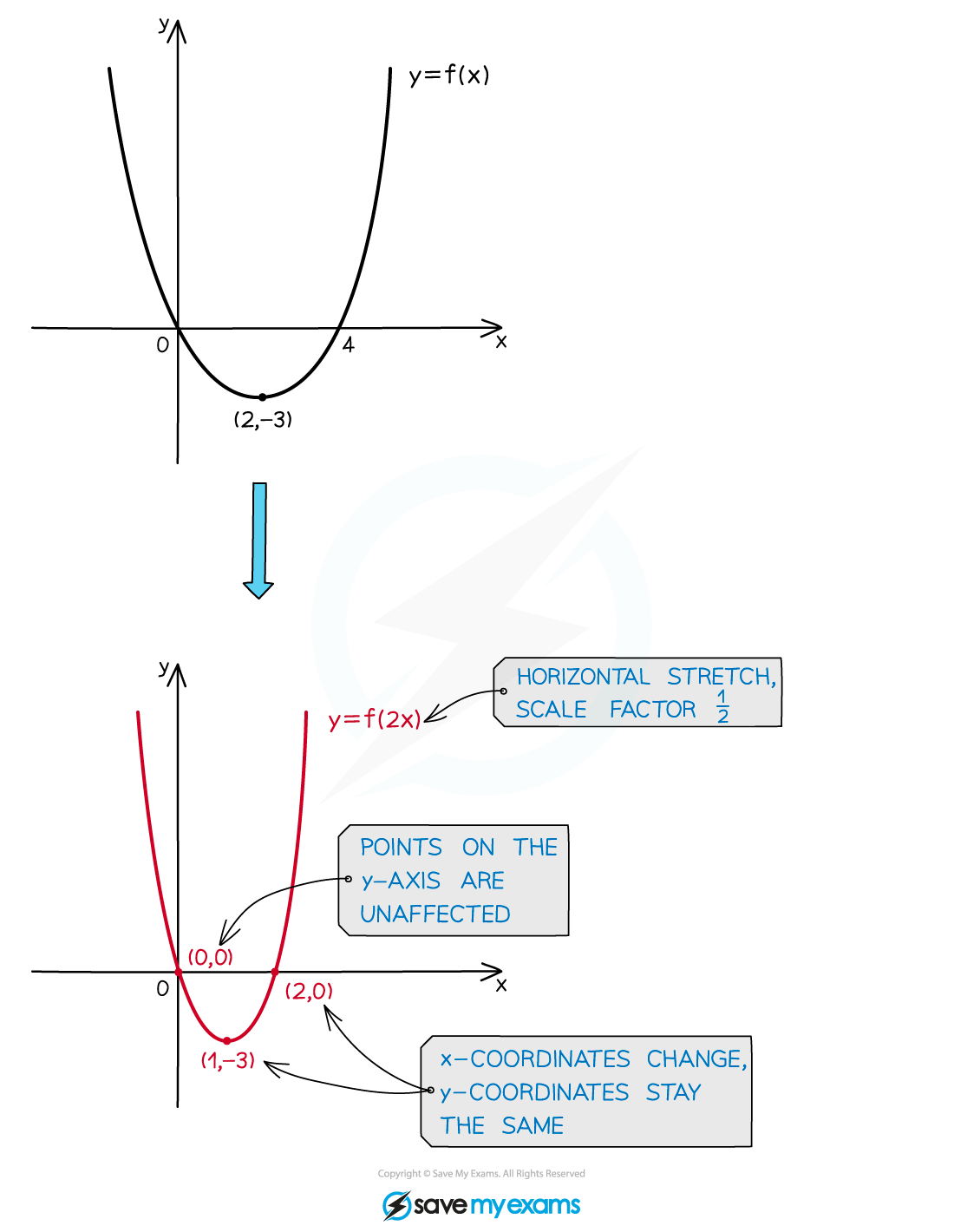Stretches (Edexcel A Level Maths) : Revision Note
Did this video help you?
Stretches
What are graph transformations?
When you alter a function in certain ways, the effects on the graph of the function can be described by geometrical transformations
With a stretch all the points on the graph are moved towards or away from either the x or the y axis by a constant scale factor

What do I need to know about graph stretches?
The graph of y = af(x) is a vertical stretch of the graph y = f(x) by a scale factor of a, centred on the x axis
The x coordinates of points stay the same; y coordinates are multiplied by a
Points on the x axis stay where they are
All other points move parallel to the y axis, away from (a > 1) or towards (0 < a < 1) the x axis

The graph of y = f(ax) is a horizontal stretch of the graph y = f(x) by a scale factor of
, centred on the y
The y coordinates of points stay the same; x coordinates are multiplied by
Points on the y axis stay where they are
All other points move parallel to the x axis, away from (0 < a < 1) or towards (a > 1) the y axis

Any asymptotes of f(x) are also affected by the stretch (stretch them as you would stretch the function of a straight line)
If an asymptote is one of the coordinate axes, or is parallel to the direction of the stretch, however, it will not be affected

Examiner Tips and Tricks
When you sketch a stretched graph, be sure to indicate the new coordinates of any points that are marked on the original graph.
Try to indicate the coordinates of points where the stretched graph intersects the coordinate axes (if you don't have the equation of the original function this may not be possible).
If the graph has asymptotes, don't forget to sketch the asymptotes of the stretched graph as well.
Worked Example


You've read 0 of your 5 free revision notes this week
Unlock more, it's free!
Did this page help you?
